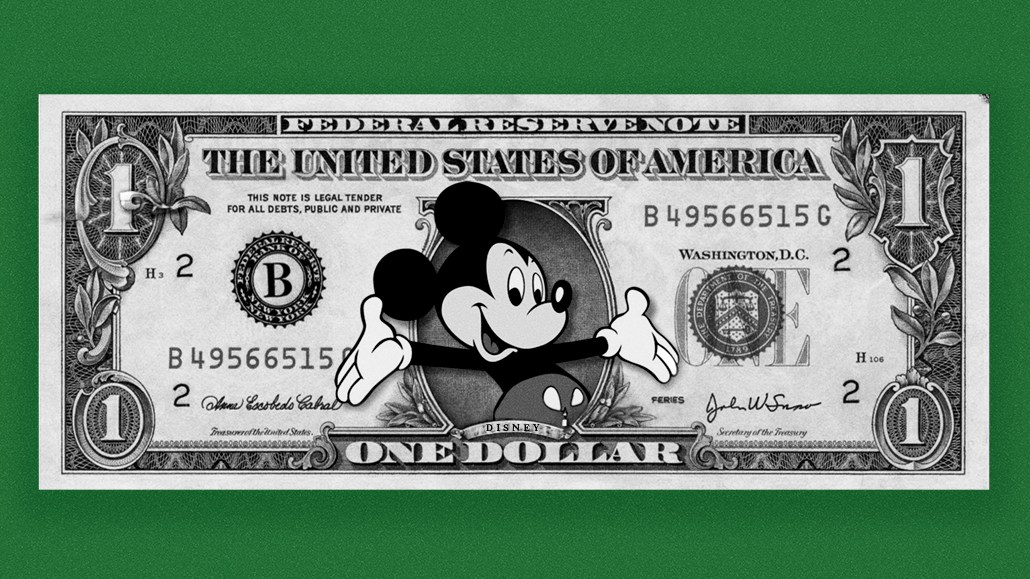Disney is rolling out DRAX Direct, a direct integration with the industry’s largest DSPs

In 2021, the House of Mouse stated its ambition to generate more than 50% of its ad revenue through programmatic sales by the close of 2024 with the debut of the Disney Real-Time Ad Exchange (DRAX).
The entertainment giant is on course to exceed its earlier-stated goal and now hopes to generate 75% of ad revenues through programmatic; a key tactic in this strategy is the launch of DRAX Direct, an initiative that will see it integrate directly with demand-side platforms.
Google’s DV 360 and The Trade Desk are DRAX Direct’s launch partners, a development the entertainment giant is characterizing as a “landmark agreement.” This development will unify access to streaming inventory across Hulu and Disney+ for advertisers of all sizes and represents a notable footnote in the annals of supply path optimization.
Although Disney has undertaken direct relationships with the two largest DSPs in the industry, executives there still maintain there is a role for supply-side platforms in its programmatic strategy, especially those that can aggregate adequate demand from smaller DSPs.
How DRAX Direct will work
Rita Ferro, president, global advertising, Disney, told Digiday that the more direct integration will “unlock incremental value” for advertisers by streamlining workflow systems through the use of technology such as clean rooms.
Additionally, Disney claims it can improve audience match rates, even as the sector undergoes a period of signal loss given the decline of third-party cookies, etcetera, through the use of audience-match offerings. Namely, these are Google’s Publisher Advertiser Identity Reconciliation, a.k.a. PAIR, and The Trade Desk’s Unified ID 2, or UID 2.
“Now we are going to be able to have a direct integration with The Trade Desk into our tech stack that will improve all the value we’re providing to marketers,” she added, noting its clean room partnerships and integration with Google PAIR will help deliver scale.
Ferro went on to say, “The two largest publishers of video opportunity in the market today are YouTube and Disney, and that lets advertisers leverage real-time buying in the way that they want to, with the audience segments they want to use across the marketplace.”
Tim Sims, chief commercial officer, The Trade Desk, told Digiday the tie-up represented a further evolution of OpenPath, an SPO strategy the DSP has been further rolling out with CTV players in recent weeks.
“We’ve heard from the marketplace that advertisers are demanding the ability to use their data and buy by media in a transparent marketplace,” he added, noting how the direct integration between The Trade Desk and DRAX further fulfills marketers’ increasing demanding demand for attributable value from programmatic buying.
Meanwhile, Sean Downey, president, Americas and global partners, Google, told Digiday the launch of DRAX Direct was indicative of how CTV is playing an increasingly important role in Disney’s monetization priorities.
“I also think it [Disney’s PAIR integration] is an advancement for addressing privacy concerns,” he said. “That’s a key component of our arrangement with them and something that I think is beneficial for DRAX as well as advertisers.”
SSPs still have a role in Disney’s set-up
In an era when policies such as SPO have brought a Darwinistic hue to ad tech, it’s fair to ask what DRAX Direct means for Disney’s relationship with SSPs.
According to Ferro, the entertainment giant still wants to work with SSPs because such partnerships will be useful, particularly as it hopes to woo SMB advertisers to its CTV platform, with Magnite, DRAX’s primary sell-side partner, still part of its plans.
“Historically, we did it all through Magnite, and we will continue to work through Magnite,” she told Digiday, noting how the SSP helps it aggregate demand across approximately 30 DSPs, and a relationship it intends to continue.
She further added, “The only two [DSPs] we’re probably going to do direct integration with are Google and Trade Desk because they’re the only ones that are big enough for the scale to do a direct integration.”
Quoting data from a publisher survey conducted in July last year, Advertiser Perceptions’ Lauren Fisher told Digiday that nearly half of all participants informed her research team of direct tie-ups with DSPs, although this did not necessarily mean that all are bypassing their historical relationships with SSPs.
She added, “40% of them told us that they were already partnering directly with outside DSPs… the anticipation in doing that is that they’re going to have higher overall yield and increased efficiency; this is an increasingly common type of set-up that we’re seeing.”
More in Media

From sidelines to spotlight: Esports events are putting creators center stage
Esports events’ embrace of content creators reflects advertisers’ changing priorities across both gaming and the wider culture. In the past, marketers viewed esports as one of the best ways to reach gamers. In 2025, brands are instead prioritizing creators in their outreach to audiences across demographics and interest areas, including gaming.

Condé Nast and Hearst strike Amazon AI licensing deals for Rufus
Condé Nast and Hearst have joined the New York Times in signing a licensing deal with Amazon for its AI-powered shopping assistant Rufus.

Media Briefing: AI payouts may be entering a new era
AI compensation is evolving — and new models, not just publisher demands, are driving the shift beyond flat-fee licensing.









